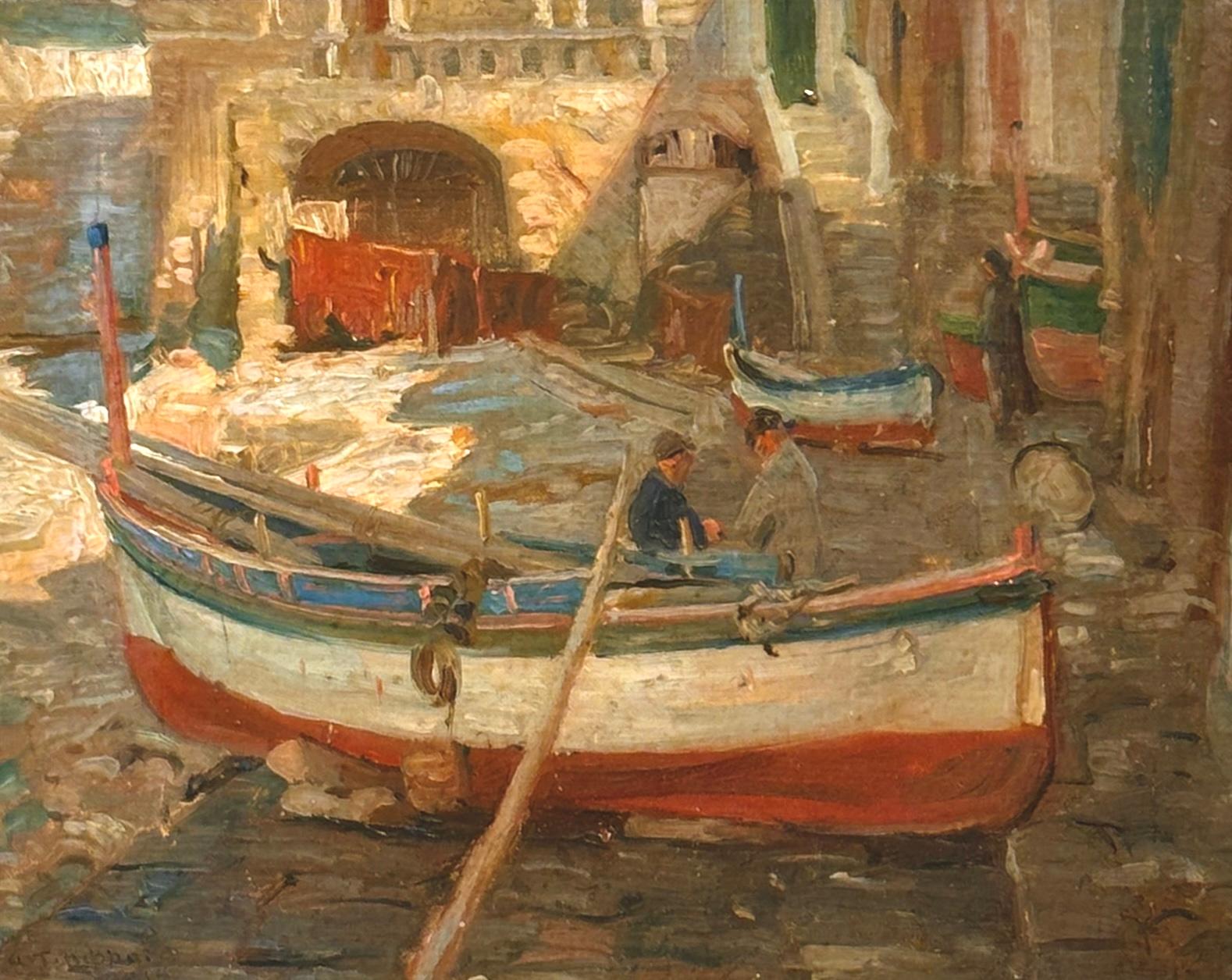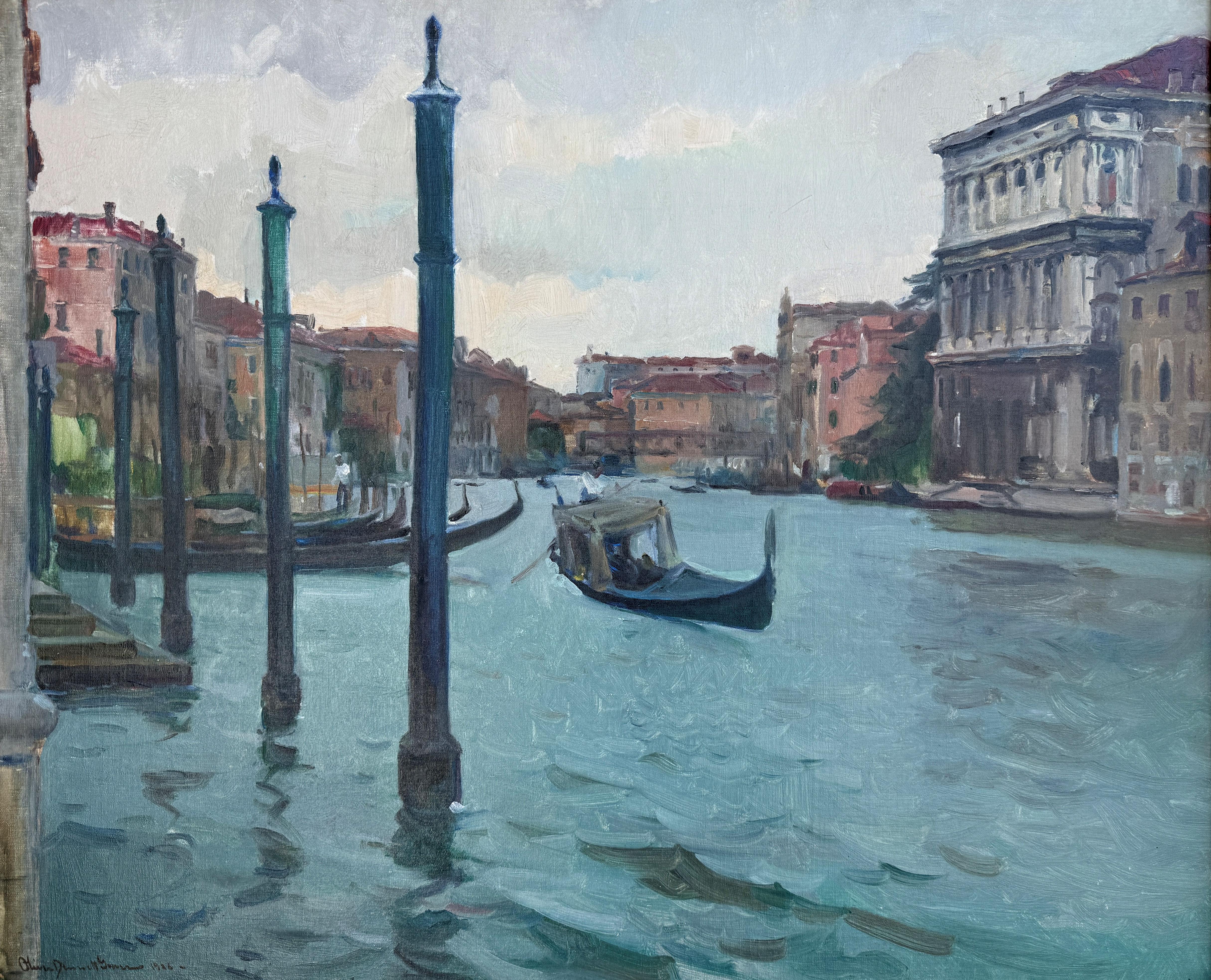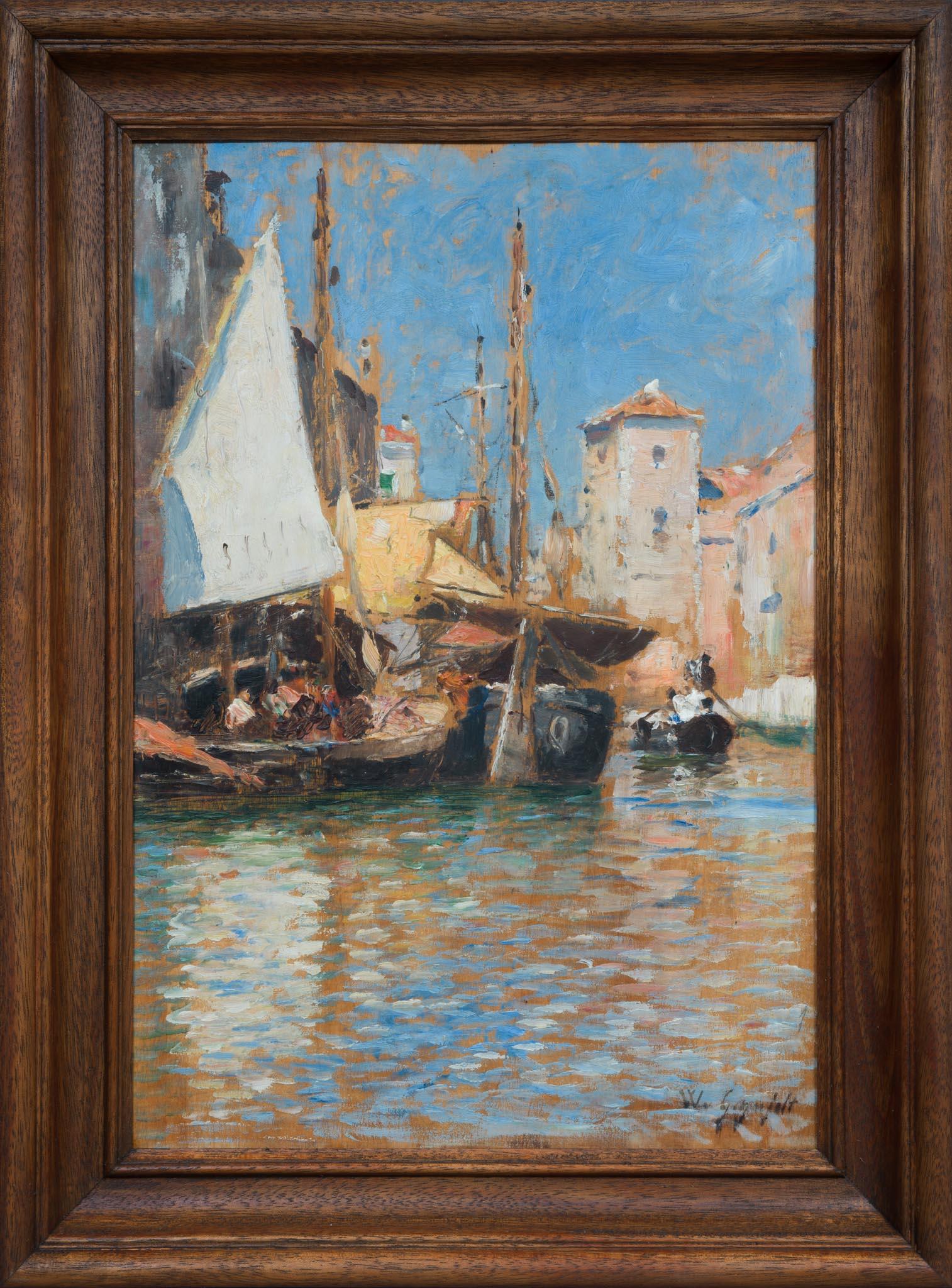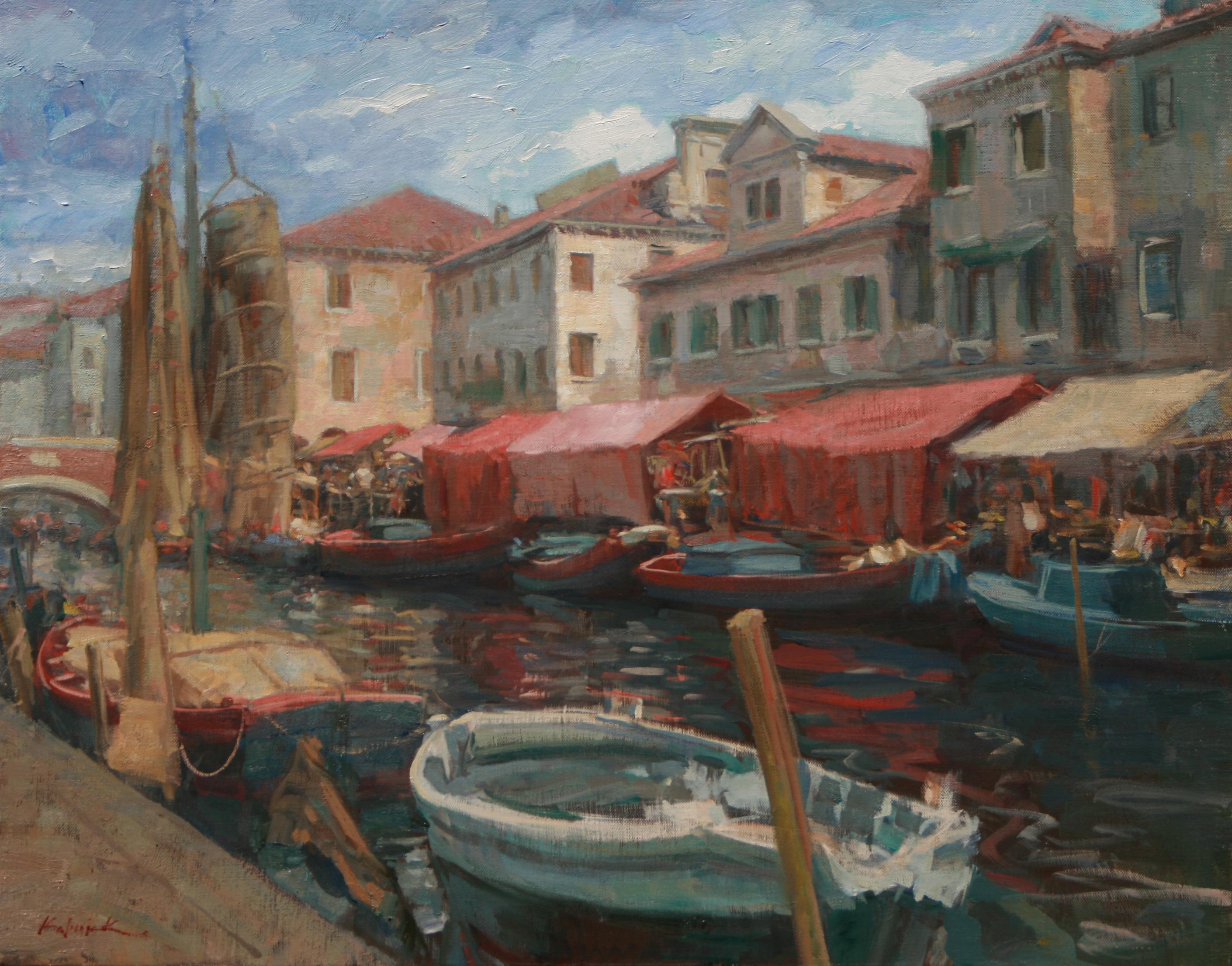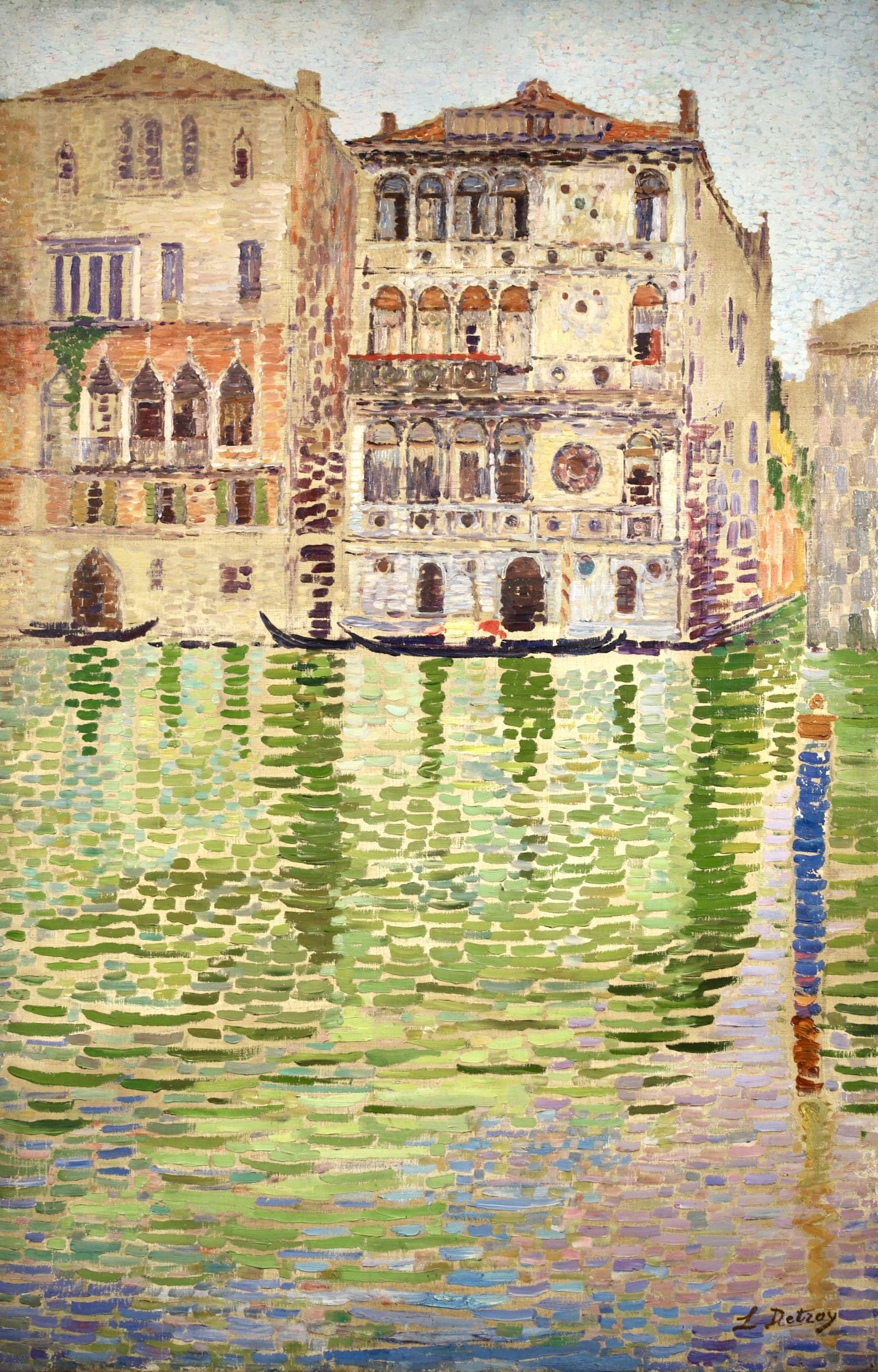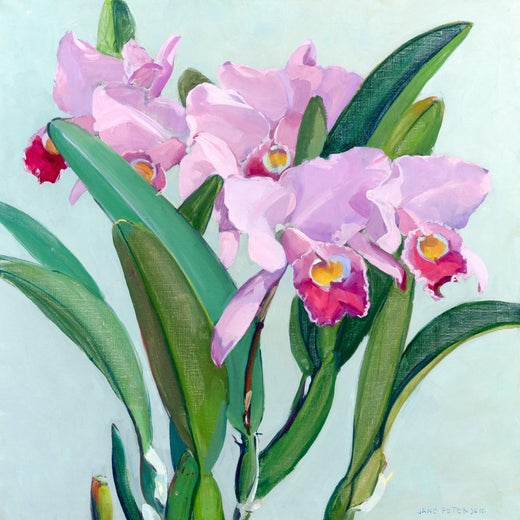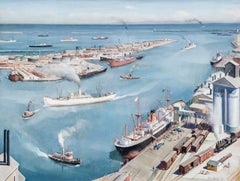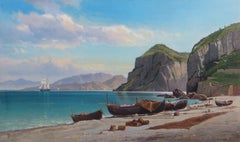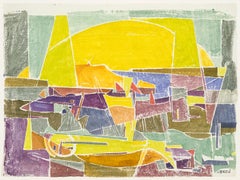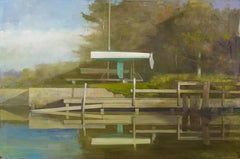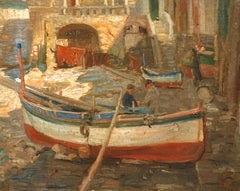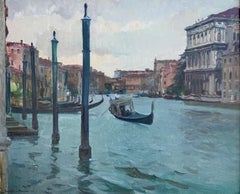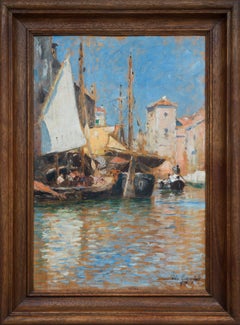Items Similar to Venice
Want more images or videos?
Request additional images or videos from the seller
1 of 8
Jane PetersonVenice1919
1919
$60,000
£45,526.62
€52,055.62
CA$83,803.73
A$93,178.35
CHF 48,652.59
MX$1,134,207.36
NOK 620,785.87
SEK 581,646.70
DKK 388,500.66
Shipping
Retrieving quote...The 1stDibs Promise:
Authenticity Guarantee,
Money-Back Guarantee,
24-Hour Cancellation
About the Item
Singed (at lower left): Jane Peterson
- Creator:Jane Peterson (1876-1965, American)
- Creation Year:1919
- Dimensions:Height: 17.5 in (44.45 cm)Width: 17.5 in (44.45 cm)Depth: 1.5 in (3.81 cm)
- Medium:
- Movement & Style:
- Period:
- Condition:
- Gallery Location:New York, NY
- Reference Number:Seller: APG 87371stDibs: LU236723172
Jane Peterson
Jane Peterson's most innovative period was from 1910 to 1930. During this time she produced her most important work. Her trips to Venice resulted in exuberant paintings full of glowing color. This painting is from that period. The brushwork is bold and exciting. The bright round yellow carob flowers contrast with the vertical mauve carob pods. The trunks and branches of the trees form a series of triangles that reflect the lush Mediterranean landscape. Originally the painting was sold in Paris to an American collector. Jane Peterson was a leading woman post-impressionist painter of the early 20th century. Born in Elgin, Illinois, on November 28, 1876, she was interested in art throughout her childhood. In 1895, she went to New York City to study art at Pratt Institute. Before graduating in 1901, Peterson taught painting and became a popular teacher at Pratt. She then became the Drawing Supervisor of Brooklyn Public Schools. She studied oil painting with Frank Vincent DuMond who emphasized a prismatic palette. Subsequently, she studied painting with Frank Brangwyn in London, Jacques Emile Blanche and André Lhote in Paris, and Joaquín Sorolla y Bastida in Madrid. She was influenced by Impressionism and Fauvism during her studies in Paris. In 1924, Peterson's painting, Toilette, received critical acclaim at the New York Society of Painters. Her one-woman show on Fifth Avenue sold out. By this time, she had won numerous awards, was a Fellow at the National Academy of Design, and a member of many art clubs including the American Watercolor Society, Audubon Artists, Pen & Brush Club, and the National Association of Women Artists. In 1925, The New York Times characterized Peterson as "one of the foremost women painters in New York." Known for her colorful, post-impressionistic paintings of Gloucester streets and harbor on Cape Ann; palm trees along the Florida coast; street scenes in Paris, Istanbul, and New York City; and boating views in Venice. Peterson also flamboyantly executed floral subjects and dynamic genre-like portraits. Carob Tree (Ceratonia siliqua) is a small evergreen tree of the Mediterranean coasts. It has dark green, compound leaves with glossy, oval leaflets. In Italy, the carob tree blooms from September to November. Its seedpods, also known as Saint John's bread, are up to 45 centimeters long and are filled with round, hard seeds and a thick pulp. St. John's Bread was probably the husks in the Prodigal Son parable and the seed which is said to have been the original jewelers' carat weight. The Spaniards call it Algaroba, and the Arabs Kharoub, hence Carob or Caroub Pods, Beans, or Sugar-pods. It is also named Locust Pods. These pods are grown in southern Europe for feeding domestic animals as well as for human food. Carob is sold in health food stores and is often a substitute or alternate to chocolate.
About the Seller
5.0
Recognized Seller
These prestigious sellers are industry leaders and represent the highest echelon for item quality and design.
Established in 1952
1stDibs seller since 2010
35 sales on 1stDibs
Typical response time: 3 hours
Associations
Art Dealers Association of America
- ShippingRetrieving quote...Shipping from: New York, NY
- Return Policy
Authenticity Guarantee
In the unlikely event there’s an issue with an item’s authenticity, contact us within 1 year for a full refund. DetailsMoney-Back Guarantee
If your item is not as described, is damaged in transit, or does not arrive, contact us within 7 days for a full refund. Details24-Hour Cancellation
You have a 24-hour grace period in which to reconsider your purchase, with no questions asked.Vetted Professional Sellers
Our world-class sellers must adhere to strict standards for service and quality, maintaining the integrity of our listings.Price-Match Guarantee
If you find that a seller listed the same item for a lower price elsewhere, we’ll match it.Trusted Global Delivery
Our best-in-class carrier network provides specialized shipping options worldwide, including custom delivery.More From This Seller
View AllSan Pedro Harbor
By Paul Sample
Located in New York, NY
It is infrequent, to say the least, that a diagnosis of tuberculosis proves fortuitous, but that was the event, in 1921, that set Paul Starrett Sample on the road to becoming a professional artist. (The best source for an overview of Sample’s life and oeuvre remains Paul Sample: Painter of the American Scene, exhib. cat., [Hanover, New Hampshire: Hood Museum of Art, 1988] with a detailed and definitive chronology by Sample scholar, Paula F. Glick, and an essay by Robert L. McGrath. It is the source for this essay unless otherwise indicated.) Sample, born in Louisville, Kentucky, in 1896 to a construction engineer and his wife, spent his childhood moving with his family to the various locations that his father’s work took them. By 1911, the family had landed in Glencoe, Illinois, settling long enough for Paul to graduate from New Trier High School in 1916. Sample enrolled at Dartmouth College, in Hanover, New Hampshire, where his interests were anything but academic. His enthusiasms included the football and basketball teams, boxing, pledging at a fraternity, and learning to play the saxophone. After the United States entered World War I, Sample, to his family’s dismay, signed on for the Naval Reserve, leading directly to a hiatus from Dartmouth. In 1918 and 1919, Sample served in the U.S. Merchant Marine where he earned a third mate’s license and seriously contemplated life as a sailor. Acceding to parental pressure, he returned to Dartmouth, graduating in 1921. Sample’s undergraduate life revolved around sports and a jazz band he formed with his brother, Donald, two years younger and also a Dartmouth student. In November 1933, Sample summarized his life in a letter he wrote introducing himself to Frederick Newlin Price, founder of Ferargil Galleries, who would become his New York art dealer. The artist characterized his undergraduate years as spent “wasting my time intensively.” He told Price that that “I took an art appreciation course and slept thru it every day” (Ferargil Galleries Records, circa 1900–63, Archives of American Art, Smithsonian Institution, available on line).
In 1920, Donald Sample contracted tuberculosis. He went for treatment to the world-famous Trudeau Sanitorium at Saranac Lake, in New York State’s Adirondack Mountains for the prescribed regimen of rest, healthful food, and fresh air. Visiting his brother in 1921, Paul also contracted the disease. Tuberculosis is highly contagious, and had no certain cure before the development of streptomycin in 1946. Even for patients who appeared to have recovered, there was a significant rate of recurrence. Thus, in his letter to Price, Sample avoided the stigma conjured by naming the disease, but wrote “I had a relapse with a bad lung and spent the next four years hospitalized in Saranac Lake.” The stringent physical restrictions imposed by adherence to “the cure” required Sample to cultivate an alternate set of interests. He read voraciously and, at the suggestion of his physician, contacted the husband of a fellow patient for instruction in art. That artist, then living in Saranac, was Jonas Lie (1880–1940), a prominent Norwegian-American painter and an associate academician at the National Academy of Design. Lie had gained renown for his dramatic 1913 series of paintings documenting the construction of the Panama Canal (The Metropolitan Museum of Art, New York; United States Military Academy, West Point, New York). Primarily a landscape artist, Lie had a particular affinity for scenes with water. His paintings, impressionistic, atmospheric, and brushy, never strayed from a realistic rendering of his subject. Sample regarded Lie as a mentor and retained a lifelong reverence for his teacher. Sample’s early paintings very much reflect Lie’s influence.
`
In 1925, “cured,” Sample left Saranac Lake for what proved to be a brief stay in New York City, where his veteran’s benefits financed a commercial art course. The family, however, had moved to California, in the futile hope that the climate would benefit Donald. Sample joined them and after Donald’s death, remained in California, taking classes at the Otis Art Institute in Los Angeles. In Sample’s account to Price, “I couldn’t stomach the practice of painting a lot of High Sierras and desert flowers which seemed to be the only kind of pictures that were sold here so I got a job teaching drawing and painting at the art school of the University of Southern California.” Initially hired as a part-time instructor, Sample progressed to full-time status and ultimately, by the mid-1930s, to the post of Chairman of the Fine Art Department. Sample, however, did not want to wind up as a professor. “Teaching is all right in small doses,” he wrote, “but I have a horror of drifting into being a college professor and nothing more.” At the same time as he taught, Sample began to exhibit his work in a variety of venues at first locally, then nationally. Though he confessed himself “a terrible salesman,” and though occupied with continued learning and teaching, Sample was nonetheless, ambitious. In 1927, he wrote in his diary, “I am eventually going to be a painter and a damned good one. And what is more, I am going to make money at it” (as quoted by Glick, p. 15). In 1928, Sample felt sufficiently solvent to marry his long-time love, Sylvia Howland, who had also been a patient at Saranac Lake. The Howland family were rooted New Englanders and in summertime the Samples regularly traveled East for family reunion vacations.
While the 1930s brought serious hardship to many artists, for Paul Sample it was a decade of success. Buttressed by the financial safety net of his teacher’s salary, he painted realist depictions of the American scene. While his work addressed depression-era conditions with a sympathetic eye, Sample avoided the anger and tinge of bitterness that characterized much contemporary realist art. Beginning in 1930, Sample began to exhibit regularly in juried exhibitions at important national venues, garnering prizes along the way. In 1930, Inner Harbor won an honorable mention in the Annual Exhibition of the Art Institute of Chicago. That same year Sample was also represented in a show at the Albright-Knox Gallery in Buffalo and at the Biennial Exhibition of the Corcoran Gallery of Art, Washington, D.C. In 1931, Dairy Ranch won the second Hallgarten Prize at the Annual Exhibition of the National Academy of Design, in New York. Sample also made his first appearances at the Carnegie Institute, Pittsburgh, and The Pennsylvania Academy of the Fine Arts, Philadelphia. In 1936, Miner’s Resting won the Temple Gold Medal at the Pennsylvania Academy’s Annual Exhibition. Always interested in watercolor, in 1936, Sample began to send works on paper to exhibitions at the Whitney Museum, New York.
While participating in juried exhibitions, Sample also cultivated commercial possibilities. His first New York art dealer was the prestigious Macbeth Gallery in New York, which included his work in a November 1931 exhibition. In 1934, Sample joined the Ferargil Galleries in New York, after Fred Price arranged the sale of Sample’s Church Supper to the Michele and Donald D’Amour Museum of Fine Arts in Springfield, Massachusetts. In 1937, The Metropolitan Museum of Art purchased Sample’s Janitor’s Holiday from the annual exhibition of the National Academy of Design, a notable honor.
As prestigious as this exhibition schedule may have been, by far Sample’s most visible presence in the 1930s and 1940s was the result of his relationship with Henry Luce’s burgeoning publishing empire, Time, Inc. Sample’s first contribution to a Luce publication appears to have been another San Pedro...
Category
20th Century American Modern Landscape Paintings
Materials
Canvas, Oil
Marina Grande, Capri
By Charles Temple Dix
Located in New York, NY
Charles Temple Dix was born in Albany, New York, the youngest son of the distinguished statesman and soldier, General John Adams Dix. Having already visited Europe as a child, Dix re...
Category
19th Century American Realist Landscape Paintings
Materials
Canvas, Oil
Bar Harbor
Located in New York, NY
Edition: 5 or less. One of possibly 3 variants
Category
20th Century American Modern Abstract Prints
Materials
Monotype
J Boat
By Randall Exon
Located in New York, NY
Signed and dated (at lower right): Randall Exon 2018
Category
2010s Contemporary Landscape Paintings
Materials
Oil
$22,000
Below South Ferry
By Franz Kline
Located in New York, NY
Signed (at lower right): KLINE
EXHIBITED: Pratt Institute, Brooklyn, New York, November 1–30, 1960, The November Show, as “Moonlight in Lower Manhattan” // Pratt Institute, Brooklyn...
Category
Mid-20th Century Abstract Expressionist Landscape Paintings
Materials
Oil, Board
Chatham Square
By Franz Kline
Located in New York, NY
Signed (at lower left): FRANZ KLINE
RECORDED: Elizabeth Johnson, “Franz Kline’s Roots in Coal and Steel—at Allentown Art Museum,” Artblog (December 21. 2012), illus. in color // Tim...
Category
Mid-20th Century Abstract Expressionist Landscape Paintings
Materials
Oil, Canvas
Price Upon Request
You May Also Like
American Impressionist Rockport Artist Aldro T. Hibbard Venice Landscape
Located in Rockport, MA
An early work by American impressionist Aldro T. Hibbard, “Venice, 1914." Painted during his travels abroad, Hibbard renders sunlit stone, weathered boats, and the figures of local f...
Category
20th Century American Impressionist Landscape Paintings
Materials
Oil
"Grand Canal" Oliver Dennett Grover, Venice, Vibrant American Impressionist
Located in New York, NY
Oliver Dennett Grover
Grand Canal, 1926
Signed and dated lower left
Oil on canvas
24 x 30 inches
Grover's family relocated to Chicago during his childhood. There, he dedicated a si...
Category
1920s American Impressionist Landscape Paintings
Materials
Canvas, Oil
Impressionistic Venice Scene by W. von Gegerfelt, c. 1880s
By Wilhelm von Gegerfelt
Located in Stockholm, SE
In this luminous canal scene, painted during his stay in Venice in the early 1880s, Wilhelm von Gegerfelt captures the vivid atmosphere and dazzling light of the city with remarkable...
Category
1880s Impressionist Figurative Paintings
Materials
Oil, Wood Panel
"Gondolas at the Dock, Venice, Italy" Louis Wolchonok, Boats in the Harbor Scene
By Louis Wolchonok
Located in New York, NY
Louis Wolchonok (1898 - 1973)
Gondolas at the Dock, Venice, Italy, 1928
Watercolor on paper
Sight 18 x 23 1/2 inches
Signed and dated lower right
Louis Wolchonok was an author of ar...
Category
1920s Post-Impressionist Landscape Drawings and Watercolors
Materials
Paper, Watercolor
Venetian Canal Oil on Canvas Framed Impressionism 19"x 24 "
Located in Houston, TX
Venetian Canal was painted in 2023 for an exhibition at Jack Meier Gallery in Houston, TX by William Kalwick. The artist did a study on one of the canals in Venice and William Kalwic...
Category
2010s American Impressionist Landscape Paintings
Materials
Canvas, Oil
Venice - Post Impressionist Venetian Landscape Oil Painting by Leon Detroy
By Leon Detroy
Located in Marlow, Buckinghamshire
Signed landscape oil on canvas circa 1910 by French post impressionist painter Leon Detroy. This work is painted in a divisionist style and depicts a view of gondolas on the canal in...
Category
Early 20th Century Post-Impressionist Landscape Paintings
Materials
Canvas, Oil
Read More
With Works Like ‘Yours Truly,’ Arthur Dove Pioneered Abstract Art in America
New York gallery Hirschl & Adler is exhibiting the bold composition by Dove — who’s hailed as the first American abstract painter — at this year’s Winter Show.
Remarkably, Elizabeth Turk’s Sculptures Highlight the Lost Voices of Extinct Birds
In one of the first live and in-person exhibitions at a Manhattan gallery since last spring, the California-based sculptor gives the lost voices of endangered and extinct birds and animals a magnificent embodied form.
More Ways To Browse
Venice Framed Art
Antique Venice Painting
Paintings Early 20th Century Venice
Art Simple Paintings
Paris Scene Art
Heart Painting
Paintings Of Rivers
Contemporary Art Large Scale
Philadelphia Art
Polish Artist
American School Oil
Brown And Black Painting
Love Me Art
London Landscape Painting
Silver Gelatin Signed
Gestural Abstract Art
Glamour Art
Painting Elegant
